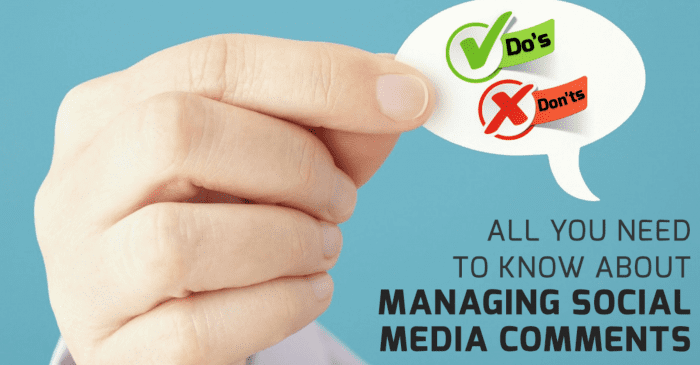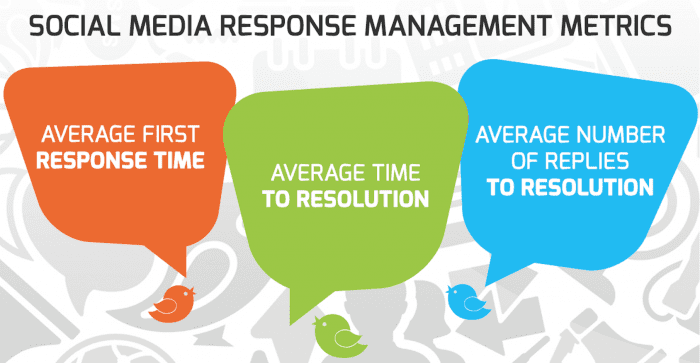Manage negative comments effectively and leverage positive ones to protect and promote your brand
Research shows that 3 out of every 4 consumers rely on social networks to guide purchase decisions while nearly 85% of them read up to 10 online reviews before they can trust a brand. Going by these statistics, it is absolutely important for you as a brand to pay close attention to mentions, comments and reviews on social media and deal with them effectively.

It all begins with listening
Unless you have a system in place to keep track of all the comments and mentions about your brand, managing them effectively is going to be an uphill task. Here are 5 tools to help you monitor your mentions and comments:
Hootsuite
Hootsuite allows you to keep a tab on specific keywords and hashtags pertaining to your brand and your industry. You can respond to these comments and mentions from within the platform itself.
Google alerts
Google alerts is a free tool to monitor mentions of your brand anywhere on the web. You can setup alerts for various queries – your brand name, competitors, industry specific keywords etc. and Google Alerts will send you emails notifying you whenever any of these keywords you specified was mentioned online.
Mention
Mention allows you to monitor, in real-time, any mentions of your brand, not just on socialnetworks, but anywhere on the web. Like Hootsuite, it also allows you to connect your social accounts (Twitter, Facebook, etc.) to your alerts and react instantly from within the application itself.
Brandwatch
Brandwatch is a social media listening and analytics solution that helps you discover the conversations around your brand on the web and turn data insights into actionable business decisions.
Meltwater
Meltwater is a media monitoring and media intelligence platform. It monitors your media content from all over the web, scans billions of conversations and helps you filter out what’s relevant and important, with meaningful metrics.
How to manage negative comments
Here are twelve steps to effectively deal with and respond to negative comments and reviews on social media:
Do not ignore/delete
Deleting a genuine negative comment (trolls are an exception) is never a good thing to do on social media. It straightaway raises questions on the brand’s integrity. It may also stoke the customer’s anger and frustration and cause him to post a flurry of negative comments on various platforms, which may eventually boil over into an uncontrollable situation. There are also good chances that the comment may have already been seen and possibly even saved as a screenshot by other customers.
Respond ASAP
It is best to respond as quickly as possible to negative comments. Irate customers generally lack patience and expect quick resolution of issues. Undue delays could only make matters worse.
Apologize first & acknowledge the error
Always begin the comment with a polite and courteous apology. This gives the brand a human face and also shows any other readers that the brand does not shy away from accepting errors when they do happen that once in a while.
Ask for more info, where required
Sometimes, frustrated customers may not give all the info that may be required to help sort out the issue. In such cases, it is best to politely request them for the info and, where possible, also tell them why this info is required to help quickly resolve the issue.
Be transparent
As a brand, it is important to be absolutely transparent and not make it seem to the customer that the brand is trying to cover up for the error
Give an explanation, where required
If there is a genuine reason for the issue, do not hesitate to communicate the same to the customer. However, ensure that the explanation is succinct and to the point. Irate customers are definitely not in the frame of mind to read stories.
Be absolutely honest – it pays
Lying about a fact or trying to hide facts is the worst mistake a brand can make. In the social world, lies get caught quickly and can cause the issue to snowball into a bigger one. Being honest on the other hand strengthens the brand reputation and builds trust, especially when the comment thread is viewed by other users.
Reassure them
For issues that might take a while to get resolved, it is best to notify them of action being taken as well as be proactive in giving them constant updates of the progress. This would help reassure them that their issue is being looked into and will definitely get resolved in due course.
Offer an incentive, where applicable
One of the best ways to quickly turn an unhappy customer to a happy one is to offer an incentive. For ecommerce businesses, for example, this could be a coupon code for their next purchase, a reduction in price on the current one or even a complete waiver of the cost, where the situation seems appropriate.
Go private, if necessary
It may be prudent to take the conversation private in some cases. However, in such cases, once the issue is resolved in private, it is a best practice to close the issue on the social media comment thread as well, so other users know that the brand has responded and sorted out the issue.
Keep your cool – Be polite at all times
Irritated customers may get emotional and be downright rude, but it is imperative that you as a brand representative, must keep your cool, not take things personally and reply with an absolutely calm state of mind.
Update and close
Always ensure that the comment thread has been updated once the issue is resolved, so that the same is visible to other customers glancing through the thread, while in the process of making a purchase decision.
How to manage positive comments
Here are some key points to keep in mind while responding to positive comments and reviews: Thank them
The bare minimum that is required while responding to a positive social media comment or review is to thank the customer for the feedback, to acknowledge and appreciate their effort
Avoid canned, template-like responses
Canned template-like responses, like a standard “Thank you for your feedback. We really appreciate your effort”, take away the brand’s human side and do not build a relationship with the customer. These are best avoided.
Personalize
The response to every positive review must be personalized – addressing the customer by their name is a bare minimum. The more personalized the response is the more elated the customer would feel and this increases the chances of not only turning them into loyal customers but also evangelists for the brand.
Encourage them to visit again
Always encourage your customers to come back and bring their friends along as well. This helps build a long-term relationship with the customer.
Relay the feedback
If the review mentions names of staff the customer was particularly impressed with, do mention to them that you will relay the feedback to staff member concerned. And do actually relay the feedback – you will make the staff member’s day as well!
Request reviews on other platforms
Where applicable, it might make sense to request the customer to leave a review on other platforms as well. For example, for the hospitality sector this could be Zomato or TripAdvisor while for local businesses, it could be a review on the Google Local Business page.
Leverage the feedback
Positive customer feedback can be showcased as testimonials on your website as well as promoted across your social media channels. This is the best way to leverage these reviews and make the most of them to help build consumer trust in your brand.
Social media response management metrics

Here are the key metrics you and your social media response management team should be measuring to help you measure the effectiveness of your efforts:
Average First Response Time
The average response time can be calculated by taking the average of all the individual response times for each post. These can be calculated as the time difference between the first response to the customer comment and the time it was posted
Average Time to Resolution
The average time to resolution is the time taken from the opening of a comment thread to the time the issue is resolved and the thread is closed. This will depend on the type and gravity of the issue and may vary from a few hours to a few days or even weeks in some cases.
Average number of replies to resolution
This is the total number of interaction it takes to resolve the issue. This number should ideally be one. However, this is seldom the case and the average tends to be a lot of higher.
Managing social media comments at scale
For big brands, especially in sectors such as ecommerce, where customer engagement is high, the number of mentions, comments and reviews across channels and platforms may become difficult to keep track of and reply to without a software solution in place. In such cases, there are a number of online customer supportsoftwares like Desk, Zendesk and Freshdesk available, which help streamline the social media response management process. For a list of the best customer support softwares you can choose from, check out this infographic on managing comments on social media.





 Thanks to
Thanks to 


